Showing Spotlights 1209 - 1216 of 2787 in category All (newest first):
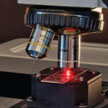 The desire to identify materials and their properties to understand complex systems and better engineer their functions has been driving scanning probe microscopies since their inception. Both atomic force microscopy (AFM) and Raman spectroscopy are techniques used to gather information about the surface properties and chemical information of a sample. There are many reasons to combine these two technologies, and this application note discusses both the complementary information gained from the techniques and how a researcher having access to a combined system can benefit from the additional information available.
The desire to identify materials and their properties to understand complex systems and better engineer their functions has been driving scanning probe microscopies since their inception. Both atomic force microscopy (AFM) and Raman spectroscopy are techniques used to gather information about the surface properties and chemical information of a sample. There are many reasons to combine these two technologies, and this application note discusses both the complementary information gained from the techniques and how a researcher having access to a combined system can benefit from the additional information available.
Mar 6th, 2014
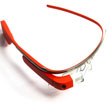 The integration of consumer electronics with advanced imaging and analytical platforms holds great promises for medical point-of-care diagnostics and environmental rapid field testing for pollutants and viruses. A recent example is a Google Glass application and a server platform for instant, wireless diagnostic testing of a variety of health conditions and diseases. This technology allows Google Glass wearers to use the hands-free camera on the device to send images of diagnostic tests that screen for conditions such as HIV or prostate cancer.
The integration of consumer electronics with advanced imaging and analytical platforms holds great promises for medical point-of-care diagnostics and environmental rapid field testing for pollutants and viruses. A recent example is a Google Glass application and a server platform for instant, wireless diagnostic testing of a variety of health conditions and diseases. This technology allows Google Glass wearers to use the hands-free camera on the device to send images of diagnostic tests that screen for conditions such as HIV or prostate cancer.
Mar 4th, 2014
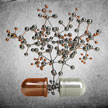 More serious than the common cold, influenza viral infection has been responsible for major epidemics and pandemic respiratory disease in communities around the world. These epidemics come with substantial morbidity and mortality, accounting for 250,000 to 500,000 worldwide deaths each year and are particularly dangerous for vulnerable and elderly populations with statistics showing that 90% of those who succumb to the severe illness are 65 years and older. The flu is also associated with high health care costs. In the U.S., more than $80 billion dollars is spent annually as a result of influenza epidemics.
More serious than the common cold, influenza viral infection has been responsible for major epidemics and pandemic respiratory disease in communities around the world. These epidemics come with substantial morbidity and mortality, accounting for 250,000 to 500,000 worldwide deaths each year and are particularly dangerous for vulnerable and elderly populations with statistics showing that 90% of those who succumb to the severe illness are 65 years and older. The flu is also associated with high health care costs. In the U.S., more than $80 billion dollars is spent annually as a result of influenza epidemics.
Mar 3rd, 2014
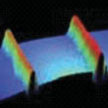 The term printed electronics refers to the application of printing technologies for the fabrication of electronic circuits and devices, increasingly on flexible plastic or paper substrates. Traditionally, electronic devices are mainly manufactured by photolithography, vacuum deposition, and electroless plating processes. In contrast to these multistaged, expensive, and wasteful methods, inkjet printing offers a rapid and cheap way of printing electrical circuits with commodity inkjet printers and off-the-shelf materials.
The term printed electronics refers to the application of printing technologies for the fabrication of electronic circuits and devices, increasingly on flexible plastic or paper substrates. Traditionally, electronic devices are mainly manufactured by photolithography, vacuum deposition, and electroless plating processes. In contrast to these multistaged, expensive, and wasteful methods, inkjet printing offers a rapid and cheap way of printing electrical circuits with commodity inkjet printers and off-the-shelf materials.
Feb 27th, 2014
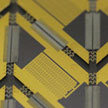 Inspired by a particular folding technique called rigid origami, researchers have demonstrated foldable silicon solar cells. The fabrication process utilizes mainstream high-temperature processes to fabricate high-performance stretchable electronics. In this approach, high-performance functional devices are fabricated on rigid surfaces and do not experience large strain during deformation, and these rigid surfaces are joined by serpentine-shaped interconnects that allow for a full-degree folding and unfolding, which enables deformability.
Inspired by a particular folding technique called rigid origami, researchers have demonstrated foldable silicon solar cells. The fabrication process utilizes mainstream high-temperature processes to fabricate high-performance stretchable electronics. In this approach, high-performance functional devices are fabricated on rigid surfaces and do not experience large strain during deformation, and these rigid surfaces are joined by serpentine-shaped interconnects that allow for a full-degree folding and unfolding, which enables deformability.
Feb 26th, 2014
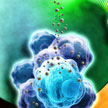 Nanotechnology has made great strides in biology and medicine in the past year. Here is a list of the top 10 developments in Nanodermatology in 2013, as compiled by the Nanodermatology Society. These topics will be the subject of multiple talks and two sessions at the American Academy of Dermatology Annual Meeting on March 21-25, 2014 in Denver. This, however, is just a sampling of the topics to be covered and world class speakers in medical nanotechnology.
Nanotechnology has made great strides in biology and medicine in the past year. Here is a list of the top 10 developments in Nanodermatology in 2013, as compiled by the Nanodermatology Society. These topics will be the subject of multiple talks and two sessions at the American Academy of Dermatology Annual Meeting on March 21-25, 2014 in Denver. This, however, is just a sampling of the topics to be covered and world class speakers in medical nanotechnology.
Feb 24th, 2014
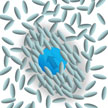 Bi-stability is widely used in digital electronics devices to store binary data. It is the essential characteristic of the flip-flop, a circuit widely used in latches and some types of semiconductor memory. However, it is possible to store more data at the nanoscale with multi-stable memory functions. Researchers have now developed a multi-stable nonvolatile soft memory function by doping ferroelectric nanoparticles into liquid crystal matrices.
Bi-stability is widely used in digital electronics devices to store binary data. It is the essential characteristic of the flip-flop, a circuit widely used in latches and some types of semiconductor memory. However, it is possible to store more data at the nanoscale with multi-stable memory functions. Researchers have now developed a multi-stable nonvolatile soft memory function by doping ferroelectric nanoparticles into liquid crystal matrices.
Feb 19th, 2014
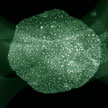 New work by an international team of researchers provides not only new insights into the chemical evolution of monodisperse nanoparticles from an atomic metal-dispersed precursor, but also a general route to obtain tunable nanoparticles as heterogeneous catalysts for chemical and material production. The team used an atomic metal-dispersed precursor of layered double hydroxides to synthesize high density, monodisperse metal nanoparticles. They then selected carbon nanotube growth as the probe reaction to evaluate the catalytic performance of the monodisperse metal nanoparticles catalysts.
New work by an international team of researchers provides not only new insights into the chemical evolution of monodisperse nanoparticles from an atomic metal-dispersed precursor, but also a general route to obtain tunable nanoparticles as heterogeneous catalysts for chemical and material production. The team used an atomic metal-dispersed precursor of layered double hydroxides to synthesize high density, monodisperse metal nanoparticles. They then selected carbon nanotube growth as the probe reaction to evaluate the catalytic performance of the monodisperse metal nanoparticles catalysts.
Feb 18th, 2014
 The desire to identify materials and their properties to understand complex systems and better engineer their functions has been driving scanning probe microscopies since their inception. Both atomic force microscopy (AFM) and Raman spectroscopy are techniques used to gather information about the surface properties and chemical information of a sample. There are many reasons to combine these two technologies, and this application note discusses both the complementary information gained from the techniques and how a researcher having access to a combined system can benefit from the additional information available.
The desire to identify materials and their properties to understand complex systems and better engineer their functions has been driving scanning probe microscopies since their inception. Both atomic force microscopy (AFM) and Raman spectroscopy are techniques used to gather information about the surface properties and chemical information of a sample. There are many reasons to combine these two technologies, and this application note discusses both the complementary information gained from the techniques and how a researcher having access to a combined system can benefit from the additional information available.
 Subscribe to our Nanotechnology Spotlight feed
Subscribe to our Nanotechnology Spotlight feed





